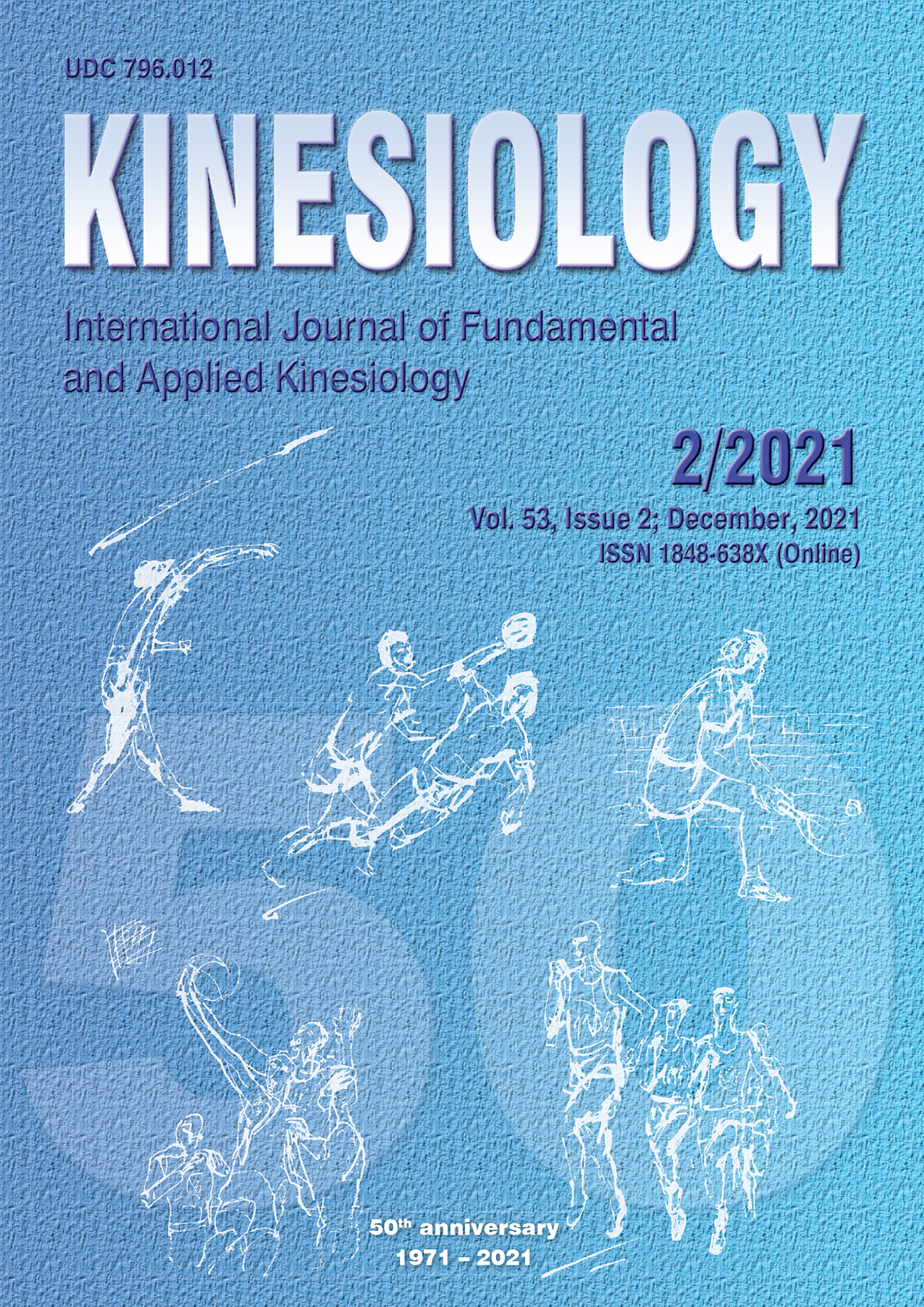THE EFFECT OF FATIGUE ON KINEMATICS AND KINETICS OF BASKETBALL DRIBBLING WITH CHANGES OF DIRECTION
Abstract
Basketball dribbling is one of the key elements in basketball game. There is a lack of studies investigating the effect of fatigue on kinematics and kinetics in basketball dribbling. There are two primary aims of this study: (1) to explore the effect of fatigue on kinematics and kinetics in dribbling with the change of directions; (2) to determine the effect of fatigue on dribbling speed. Fourteen Croatian senior male basketball players (age: 21.16±3.43 years; body height: 188.81±6.88 cm; body mass: 87.81±6.06 kg; body fat: 13.34±3.52%), not power forwards or centers, participated in the study. Each player performed two types of change of direction (COD) while dribbling: front COD and spin move in the non-fatigued and then in the fatigued state. Xsens suit and Novel insoles were used to measure the kinematic and kinetic parameters. In terms of the front COD, the results of this study demonstrated that the maximum angular velocity in the knee (p=.028) and wrist joint (p=.007) as well as maximum force (p=.004) significantly decreased in the fatigued state. In terms of the spin move, the results showed that there were significant differences in pelvis velocity (p=.000), the maximum angular velocity in the knee joint (p=.020), and the first step velocity (p=.010) between the fatigued and non fatigued states. No significant difference was found in the pelvis position, minimum angle in the knee joint and maximum force. Importantly, dribbling speed significantly decreased in the fatigued state (p=.002). The findings of this study suggest that coaching staff should design appropriate training programs to optimize players’ ability to resist fatigue when dribbling under real game speed conditions.
Key words: dribble, change of direction, spin move, velocity, angular velocity, joint angle
Downloads
Published
How to Cite
Issue
Section
License

This work is licensed under a Creative Commons Attribution-NonCommercial 4.0 International License.
At Faculty of Kinesiology we recognize that access to quality research is vital to the scientific community and beyond. Kinesiology is non-profit journal and all costs of publishing and peer review process are covered by the publisher itself or other funding sources like Ministry of Science and Education of the Republic of Croatia. Full text papers are also available free of charge at http://hrcak.srce.hr/kineziologija. There are no restrictions on self archiving of any form of paper (preprint, postprint and publisher's version).
Articles are distributed under the terms of the CC BY - NC 4.0
Kinesiology does not charge any fees to authors to submit or publish articles in our journal.


